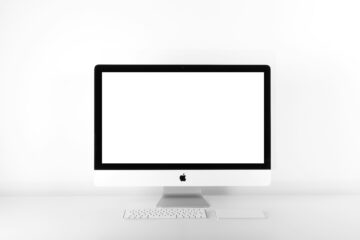What’s your relationship with email like?
Over the years, you’ve probably come to form a few opinions about email, like how to use it and whether it’s a productivity tool or a time sink. That’s perfectly normal. You should have opinions about something the average person spends 2.6 hours doing daily. So, I’m not here to tell you what to think about email. What I’d like to talk about is what you expect from your mailbox and if you’re getting it.
More than an empty Inbox
Frequently, when I discuss email with clients, there is an initial desire for their Inbox to be empty. There is a sense that ‘no mail is good mail’; if all of the clutter goes away, they’ll be more productive. But few clients believe an empty Inbox is the solution. For instance, when its suggested they put all of the old email into a subfolder or delete it (thus, achieving an empty Inbox), they observe that there’s stuff they need to keep or work on. They prefer those emails be in the Inbox or organized into multiple folders.
What do we want from email?
I think the above scenario reflects our ambiguous and ambitious relationship with email. We use email for a lot of things and we want our mailbox to reflect those varied tasks. A few of things we commonly ask of our mailbox are:
- We want it to help us to be productive or, at least, to get out of the way. This is not just a goal, but a request that email be intelligent in the form of checking for Spam, flagging important emails, or customizing filters.
- We want to use it to store, organize, and retrieve information. You see this in the form of of labeling or tagging. Advanced folders, read receipts, search parameters, and sorting become a must.
- We want to leverage all of this information to get work done inside of the application. We use the ability to flag emails as High priority, color-code them, and create task lists.
Answers everywhere else
That’s a complex list of demands for email. To think about that in slightly different terms, literally thousands of applications have been designed to tackle each of these problems depending on the priority. For instance, Slack, Hangouts, and even iMessage focus on improving conversations. Clio, TimeSolv, and PracticePanther aim to tackle the problem of document management. Tasks, Todo lists, and Sortd attempt to transform your mailbox into a place where work gets done.
Despite it all, people spend the same amount of time communicating as before. It may be one reason why the framework of Inbox Zero is so appealing. It provides a no-frills way to think about and use email, so that we spend as little time as possible thinking about it.
Where clutter comes from
I like Inbox Zero. I think it can help us to improve our relationship with email. More importantly, I think it can help us to identify how clutter comes to be.
Briefly, Inbox Zero says that there are five possible actions to take for each message: delete, delegate, respond, defer and do.
I think Inbox Zero captures how we think about email: email is a relatively straightforward problem and we all have the same decisions to make.
But I think that list of actions overlooks two problems we face in practice. The first is that different roles weigh each of the actions differently. The second is that the framework doesn’t set in stone where or how to complete the actions.
These points are important. A law clerk, for instance, weighs the do action more heavily than the others. Moreover, we must ask where the work is to be done.
Clutter bomb
Take the task of onboarding new clients, as an example. Often, communications with the client come as emails. The emails usually contain attachments. To make sure the work gets done in a timely fashion, tasks are assigned, created, flagged, and color-coded – all in the mailbox. In addition, the law clerk will likely keep a copy of any email with an attachment as a precaution, over time accumulating emails, labels, and folders.
In short order, a single task inside of the law clerk’s mailbox has caused it to explode with various colours, check marks, icons, attachments – clutter. All because they did one task!
When clutter isn’t clutter
The things is, the law clerk’s mailbox is not very cluttered. It’s structured to do work, the weighted priority. It becomes cluttered when the law clerk begins to store emails with attachments. It becomes even more cluttered when the law clerk has to worry about responding to emails. None of these items individually is clutter; they become clutter when they get in the way of other things.
How to match your mailbox with your priority
Define the priority
The trick to solving mailbox clutter isn’t necessarily more labels, folders, or liberal use of archiving. The trick is to define what function your mailbox is best suited to perform for your role. Then, design for that.
In my own mailbox, the priority are the contact persons of each client. Lawyers love to send emails, so I have to make sure I don’t miss one. When an email from a client comes in, it goes directly to my Inbox. Emails from other, known contacts get delayed by 1 hour. Further, if you’re not in my contacts list, you get put into a separate folder that I have to manually check.
Is this a good system? It is for my priority, but it does mean I have to find ways to do other tasks using other applications.
Design around the priority
Using the law clerk mailbox example, the mailbox is designed to do work. That means that the communications and documentation management functions need to be done somewhere else. For communications, most clients use WhatsApp, Slack, or Hangouts. For documentation management, clients frequently use a file server, Clio, or Box.
Applying what you know
As you push non-priority functions out of your mailbox, it’s important to think about how these changes impact not just you but your team. Maybe the law clerks use Hangouts, but the lawyers not so much. How will you make this work for the team?
The good news is that most people already use these applications. There is little to no additional training or fees required. What you’re doing is making better use of your tools. By clearly defining when and how you use an application, you help to keep both your mailbox and your mind free of clutter.
Need help with technology?
The majority of what was discussed is theory. We didn’t go into how to configure your mailbox because every application is a little different. The good news is you probably have some familiarity with most of these applications, but that doesn’t mean you won’t hit a snag. If you need help understanding what works best for your law firm or how to configure any of these applications, feel free to reach out by phone or email.


